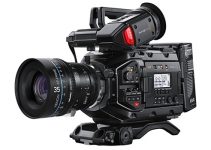There are certain occasions when using your skill and expertise as a colorist is your only option to achieve a particular look in post that is otherwise impossible to pull off on set. A typical example in that regard is converting day to night footage.
And, no, I’m not talking about applying a simple blue filter to your shot captured in the middle of a summer day with a harsh sunlight spilled all over the place.
Fortunately, with a powerful color grading suit like DaVinci Resolve 12.5, you can do a lot more than that. The talented filmmaker and colorist Casey Faris has an excellent example in that regard showcased in the following video tutorial below.
An essential prerequisite to make this workflow actually work is having a shot that was captured during an overcast day without any direct sunlight in the frame whatsoever. The first step of the process is doing a primary correction and darkening the overall shot which should give you a decent starting point to work with.
Then you can use a couple of parallel nodes to darken the sky or other areas of the shot that tend to be too bright. Furthermore, you can use another serial node to split up certain parts of the image to create variants in the lighting throughout the shot to make it look even more believable and realistic.
Meanwhile, if there are any street lamps or other practical sources of light captured in the shot, you can use those to create some subtle adjustments of illumination that can really make the difference and sell the shot. To do so, you can take advantage of the original shot by first warming it up and then mixing it with the overall look using a custom power curve windows. That way you will be able to create that realistic soft cone of light clearly visible below.
Last but not least, if there is some movement involved in the footage, you have to track all the windows to make them go along with the shot. You can easily do so by copying the tracking data from any window in the composition and applying to each of the existing layers of the shot itself.
Once you have tracked the window, go to Windows Palette, select Copy Track Data and then paste it to each of your windows. You can use the latter technique to any handheld shot that has multiple color grading layers applied to it in order to make them stuck to the shot.
[source: Casey Faris]
Disclaimer: As an Amazon Associate partner and participant in B&H and Adorama Affiliate programmes, we earn a small comission from each purchase made through the affiliate links listed above at no additional cost to you.




